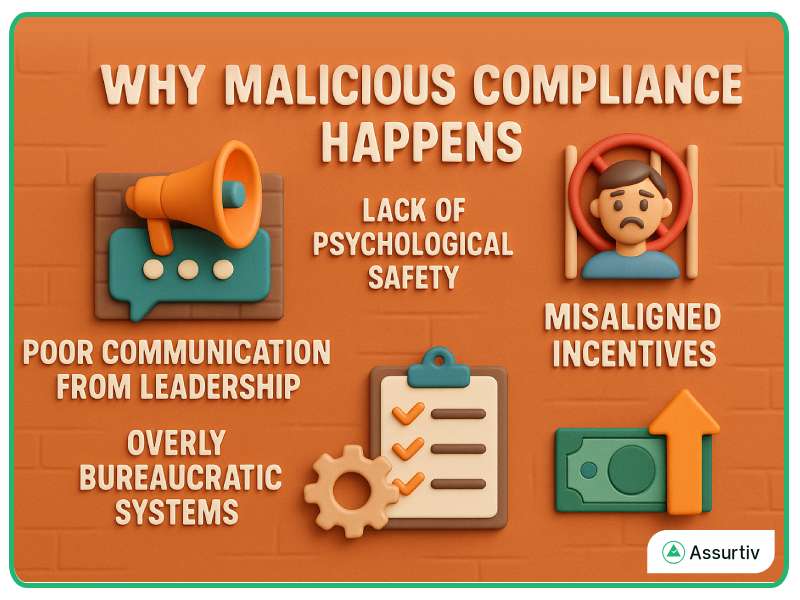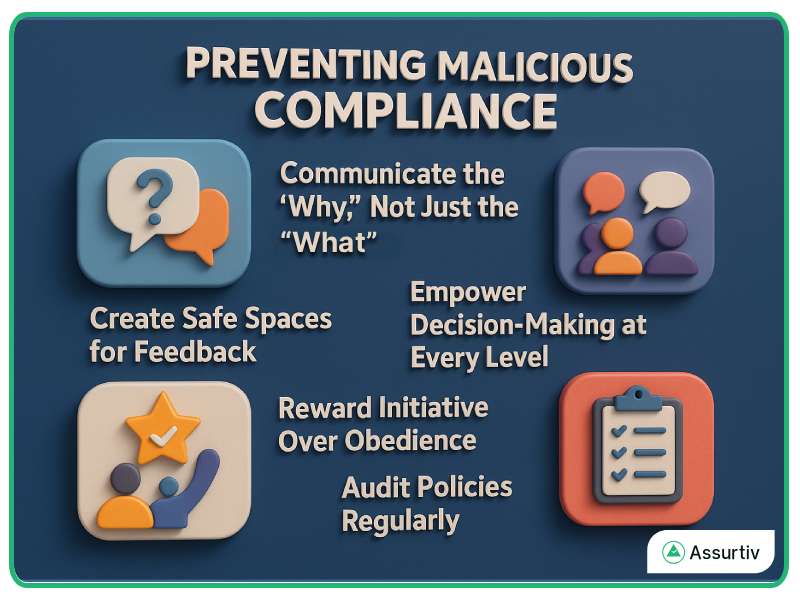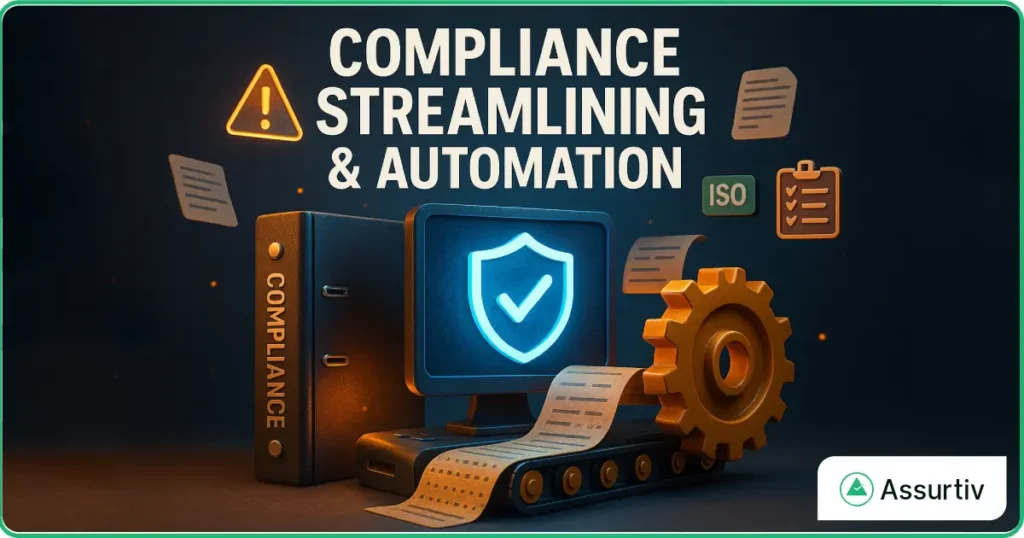The Hidden Cost of Malicious Compliance in Modern Enterprises
By Dhiren | Last Updated: 24 Oct 2025
In every organization, compliance is considered a virtue. Policies, procedures, and standardized workflows exist to ensure consistency and fairness. However, there’s a fine line between healthy compliance and what experts call “malicious compliance.”
Malicious compliance occurs when employees or teams deliberately follow orders or rules to the letter, even when they know those orders will lead to failure, inefficiency, or chaos. It’s not rebellion or defiance; rather, it’s a passive-aggressive form of resistance. Employees technically obey instructions but do so know that the outcome will highlight flaws in leadership decisions or company policies.
For industry leaders, this behavior should never be dismissed as a mere employee attitude. Instead, it’s a signal of deeper organizational dysfunction, often rooted in poor communication, lack of trust, or a rigid top-down culture.
What Is Malicious Compliance?
At its core, malicious compliance is obedient with intent, following the rules precisely to demonstrate how poorly those rules work in practice.
For example, imagine a manager insists on approving every minor expense “to maintain control.” Employees, instead of questioning it, start forwarding even trivial requests, from pens to printer paper until the manager’s inbox is overflowing. The team isn’t breaking any rules; they’re simply following them too literally.
This subtle act exposes inefficiency, but it also drains productivity and morale. What started as a leadership decision now becomes an operational bottleneck, and that’s the dangerous power of malicious compliance.
Why Malicious Compliance Happens

Malicious compliance doesn’t happen in high-trust, transparent environments. It usually surfaces when employees feel ignored, undervalued, or unheard. Several root causes contribute to this culture.
Poor Communication from Leadership
When leaders issue directives without context or explanation, employees may follow instructions blindly rather than aligning with the intent behind them. This lack of shared understanding creates space for literal interpretation, and eventual fallout.
Lack of Psychological Safety
In many organizations, employees fear questioning authority. When people believe raising concerns will lead to backlash, they stop offering constructive feedback. Silently, malicious compliance becomes a safe way to make a point indirect way.
Overly Bureaucratic Systems
Complicated policies often prioritize control over creativity. When employees are expected to “just follow the process,” innovation dies. Eventually, teams comply exactly as told- even when doing so leads to failure.
Misaligned Incentives
When employees are rewarded for adherence rather than outcomes, they learn to prioritize following rules over achieving results. This environment makes malicious compliance not only easy but sometimes rational.
The Hidden Costs of Malicious Compliance
For decision-makers, the real damage caused by malicious compliance isn’t just operational; it’s strategic.
Operational Inefficiency
When employees deliberately follow flawed instructions, workflows slow down, output quality drops, and frustration spreads. Productivity suffers as people waste time proving a point rather than solving problems.
Reputational Damage
Clients and stakeholders may see the consequences of these internal conflicts — delayed projects, missed deadlines, or inconsistent service. Over time, this destroys external trust and brand credibility.
Cultural Breakdown
A workplace driven by fear or frustration turns compliance into a weapon. Once employees start using rules to sabotage decisions, collaboration collapses. Rebuilding trust becomes far more difficult than preventing its loss.
Talent Attrition
High-performing employees prefer workplaces where they can speak up and drive change. When their input is ignored or punished, they leave their institutional knowledge with them.
How to Detect Malicious Compliance Early
Malicious compliance rarely announces itself. It operates quietly, visible only through behavioral patterns and subtle shifts in engagement. Leaders can detect it early by observing the following:
- Employees do exactly what’s asked but stop going above and beyond.
- Teams follow outdated or illogical policies without questioning them.
- Productivity metrics look fine, but innovation and creativity vanish.
- Decision-making slows because employees “wait instructions” rather than acting.
If these signs sound familiar, it is time for a leadership reset.
Preventing Malicious Compliance

Preventing malicious compliance isn’t about enforcing stricter control; it’s about building alignment, trust, and psychological safety.
Communicate the “Why,” Not Just the “What”
When leaders explain the reasoning behind directives, employees can align decisions with broader organizational goals. Context turns compliance into collaboration.
Create Safe Spaces for Feedback
Encourage open discussions where employees can raise concerns or suggest alternatives without fear. When people feel heard, they are less likely to resort to silent protest.
Empower Decision-Making at Every Level
Empower teams to make choices aligned with company objectives rather than waiting for top-down instructions. Empowerment reduces resentment and increases accountability.
Reward Initiative Over Obedience
Recognize those who challenge inefficiency constructively. Highlight stories of employees who improved processes or prevented costly mistakes through critical thinking.
Audit Policies Regularly
Outdated rules often fuel frustration. Periodically review internal policies to ensure they still serve your organization’s mission, not just its tradition.
Turning Malicious Compliance into Constructive Compliance
The opposite of malicious compliance is constructive compliance where employees follow guidelines thoughtfully while applying judgment to achieve the best outcomes.
This transformation requires leaders to build cultures rooted in trust, purpose, and communication. When people understand why a rule exists, they are more likely to adapt to it intelligently rather than follow it mechanically.
Constructive compliance fosters agility. It allows teams to operate within guardrails but still innovate when conditions change, a crucial trait in today’s dynamic business environment.
Compliance or Control?
For senior decision-makers, malicious compliance is not an employee’s problem; it is a leadership signal.
If your organization experiences high compliance but low engagement, it may be time to ask:
- Do my team understand the “why” behind our directives?
- Do they feel safe to challenge or improve our systems?
- Are we rewarding initiatives or punishing dissents?
True compliance is not about blind obedience. It is about mutual accountability, shared purpose, and trust in leadership.
When leaders replace command-and-control management with transparent communication and collaborative culture, malicious compliance loses its power. What remains is a workplace where rules guide, not restrict and where compliance drives performance, not politics.
Conclusion
Malicious compliance reveals more than defiance, it uncovers where communication, culture, or leadership has failed. For industry leaders, recognizing and addressing it early can transform frustration into insight.
By fostering openness, trust, and shared intent, decision-makers can turn rule-following into real alignment, creating teams that not only comply but care.
In the end, malicious compliance is not about employees doing the wrong thing. It is about organizations failing to make the right connections. And when those connections are rebuilt, compliance becomes a driver of excellence rather than a symptom of dysfunction.




